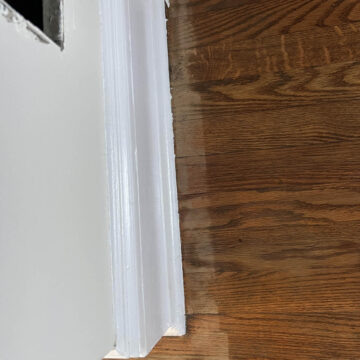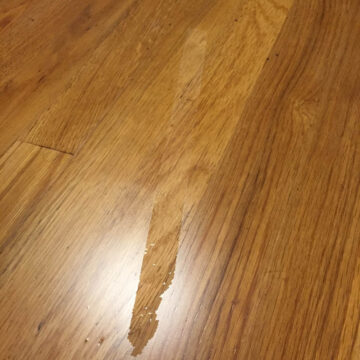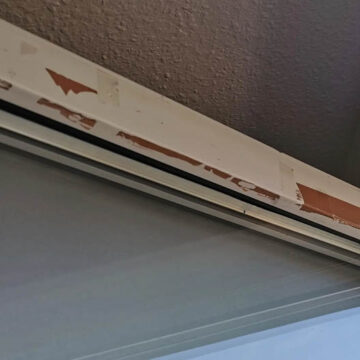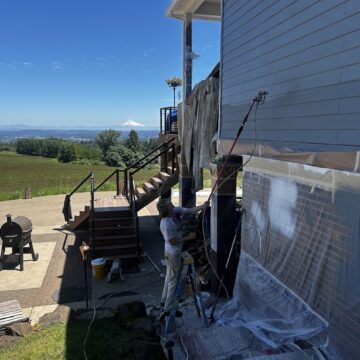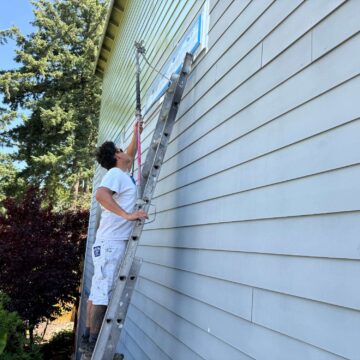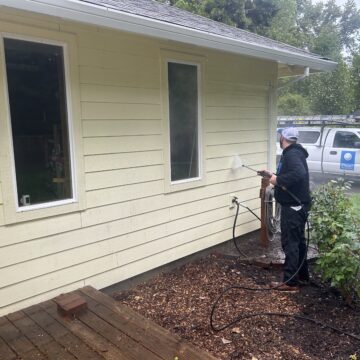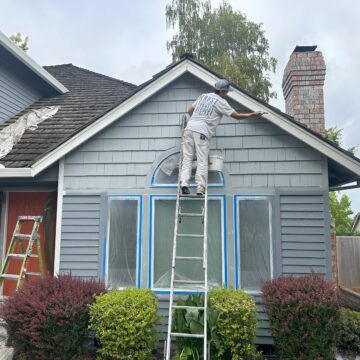When it comes to painting, we’ve established that the prep work makes all the difference. If you’ve ever tried to freehand a straight line, you know how tricky it can be. And have you ever removed your carefully-applied tape and had damaged areas or paint bleed – making tape seem useless (or even harmful!) to begin with? There are so many things that can go wrong with painter’s tape – either by using the wrong kind, or using the right kind incorrectly. That’s why we, as professional residential painters, have taken the time to figure out exactly what tape to use for each situation. Not all painter’s tape is created equal, and using the wrong one can mean peeling paint, ugly lines, or sticky residue.
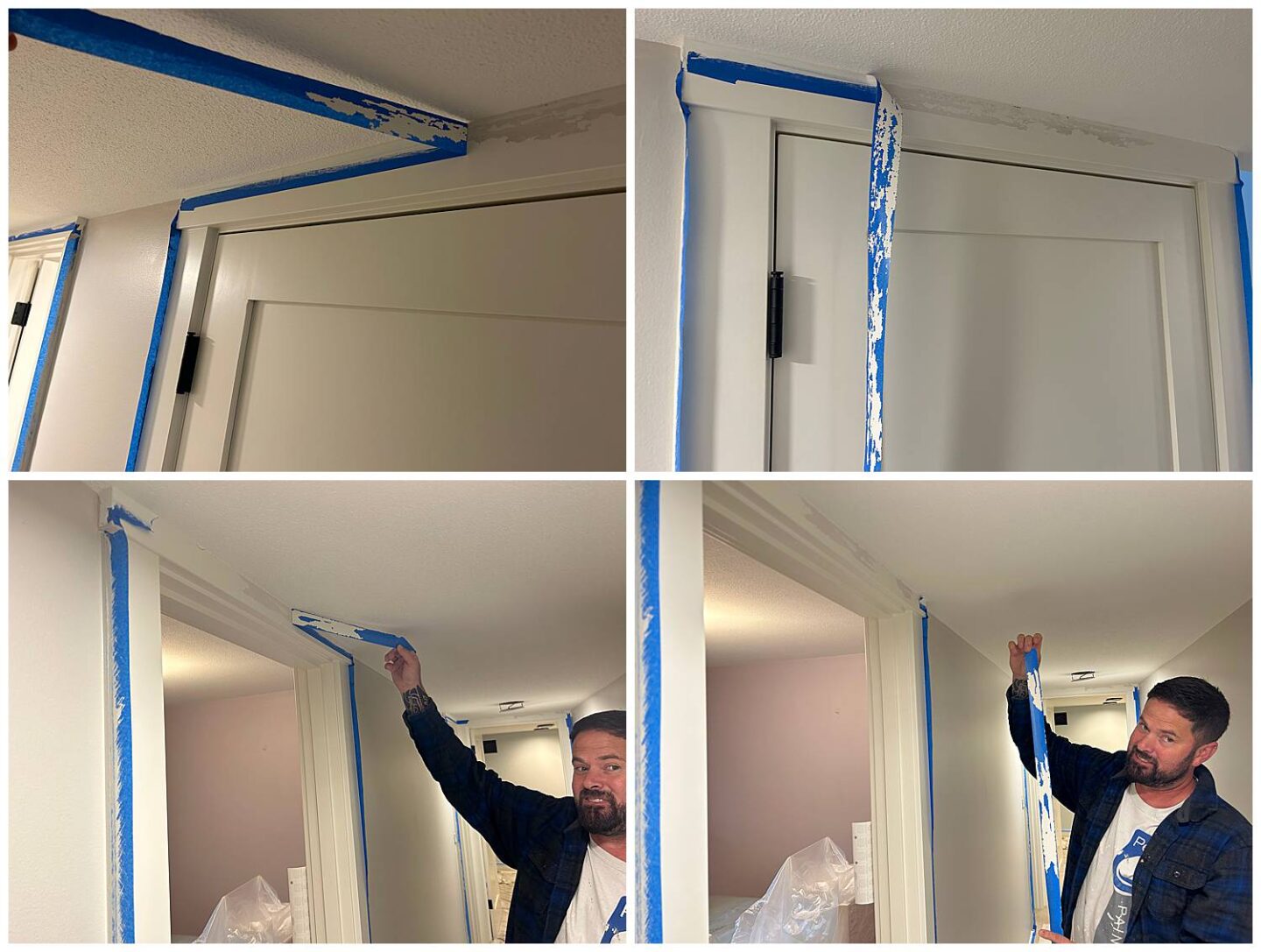
Top Tape Picks
If you’ve ever had tape pull up your paint or leave behind a mess, chances are it was either the wrong type or left on too long. Choosing the right tape, and knowing when to remove it, makes all the difference.
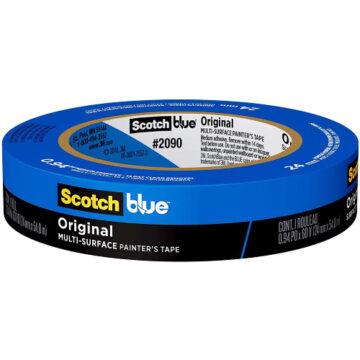
Scotch 2090 Blue Painter’s Tape
✅ Best for: Baseboards, hardwood floors, countertops, windows, and furniture.
🛠 Adhesion: Medium
🕒 Safe Removal Time: 14 days
💡 Why We Use It: It sticks well but removes cleanly, making it a go-to for most interior projects.
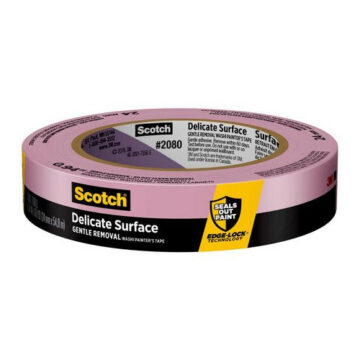
Scotch 2080 Purple Delicate Surface Tape
✅ Best for: Freshly painted walls / trim, wallpaper, and delicate surfaces.
🛠 Adhesion: Low
🕒 Safe Removal Time: 60 days
💡 Why We Use It: It’s gentle enough for fragile surfaces, perfect when protecting new paint.
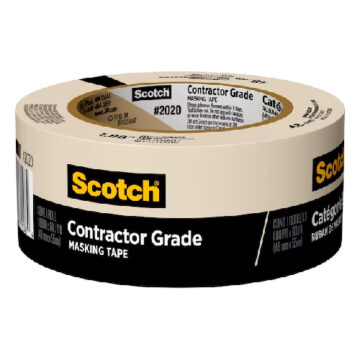
Scotch 2020 High-Adhesion Masking Tape
✅ Best for: Carpets, stucco, brick, and rough surfaces.
🛠 Adhesion: High
🕒 Safe Removal Time: 2 days (shorter if exposed to heat/sunlight)
💡 Why We Use It: It grips textured surfaces well but must be removed quickly to prevent residue.
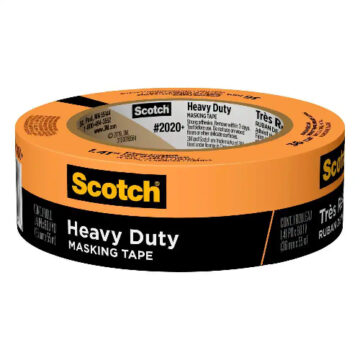
Scotch 2020+ Heavy Duty Masking Tape




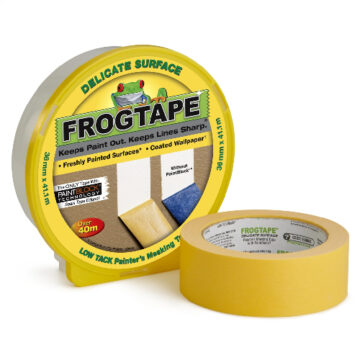
FrogTape Yellow Delicate Surface Tape
✅ Best for: Smooth and clean surfaces where you want super crisp paint lines.
🛠 Adhesion: Low
💡 Why We Use It: It has a built-in water-activated paint-blocking barrier that keeps lines razor-sharp.
So hopefully now you can see why there are so many different types of tape! We have to evaluate the surface the tape is going onto, what the tape is being used for (protection or straight lines), how recently the surface was painted, etc. This is why we have a rep with 3M that we contact when we have a unique situation – they’ll tell us exactly which tape to use. There are so many other types than the few we listed above!
What Can Go Wrong Without Proper Taping?
Even so called experienced painters make these common mistakes:




If you’ve ever had paint bleed under tape or struggled with residue, one of these issues is likely the culprit! It’s also key to use specific techniques when creating straight paint lines – such as back sealing or using water to activate the FrogTape we mentioned above. Just taping isn’t enough to get those crisp lines!
It's About More than Tape
We obviously use more than tape to protect your stuff. When it comes to masking, we use tape to secure the larger materials that we use – such as floor paper, floor film, and contractor’s plastic.
Floor Protection
There are a few different products that we use when protecting flooring. And, like when choosing tape, what we choose does depend on the situation. We primarily factor in the flooring type that we are protecting.
- Brown Floor Paper – Ideal for hardwood, tile, laminate, or other hard surfaces
- FloorShell – This is a heavy-duty floor protection option, made out of recycled fibers, and used during tougher jobs. It protects surfaces from damage, such as from scaffolding or if a heavy object is being moved.
- Carpet Protection Film – Used on carpeted areas when we need to prevent bunching, such as on staircases and the flooring around doors. It also leaves you with clean carpet since it pulls up debris when removed!
Here’s a pro tip, on what NOT to use: Do not use Red Rosin Paper! You’ll see this option at hardware stores alongside other rolls of floor protection. If any moisture gets onto this paper, the pink dye can actually leach out and stain the surface that it’s “protecting.” So avoid it when protecting your floors while painting!
Plastic Masking
There are two types of plastic that we use when masking off an area:
- 3M AMF 72 Masking Film – This film carries an electrostatic charge that prevents dust and paint flakes from sticking to it. Used for projects with multiple coats and when using the paint sprayer. It’s also really easy to remove during cleanup.
- 3M Hand-Masker Contractor’s Plastic – This is a budget-friendly plastic used during masking when overspray and paint flakes aren’t a concern. We use this during exterior painting projects when masking off windows.
Taking the time to mask properly, protect surfaces, and use the right materials makes all the difference between a DIY disaster and a professional finish.
Want crisp lines and professional results? Let the pros at Pearl Painters handle your next project. Contact us today for a free estimate!


